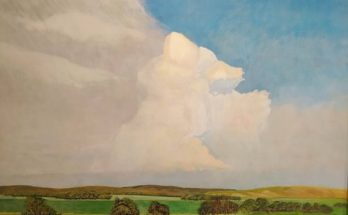By Amigos del Museo, AC
The opening of the Izcuinapan Room in the Casa de Allende Museum took place in October. Present at the ceremony were anthropologist Diego Prieto Hernández, general director of the National Institute of Anthropology and History (INAH), along with officials from the Institute. Members of the state and municipal governments, as well as those from the cultural field and the stewardship of the community of Cruz del Palmar, were also present.
This innovative space will permanently exhibit the valuable archaeological collection gathered and protected in the mid-20th century by Miguel Malo Zozaya from San Miguel. He spent many years studying and disseminating regional pre-Hispanic history, especially that which flourished for hundreds of years in the middle section of the Laja River. For almost 50 years, the collection was outside of San Miguel de Allende, but after a long process of protection and restoration by INAH, this extraordinary archaeological heritage has returned to San Miguel. Here it will be protected, studied, restored, and exhibited permanently in the Casa de Allende Museum.
For this purpose, a special room has been created, called the Izcuinapan Room, after the first indigenous settlement of the viceroyalty San Miguel. The name is Nahuatl and means “water for dogs.” It’s the same name that Miguel Malo gave to the museum located in his house—the Izcuinapan Archaeological Museum, where the collection was exhibited from 1967 to 1972.
This great effort to recover these assets lasted more than a year and owes the happy outcome to the confluence of various actors. The Casa de Allende Museum and the Friends of the Museum association took the initiative to make the project take shape under the direction of Gabriela Zepeda García Moreno. Moreno is a researcher at the INAH Guanajuato Center. Others involved were Alberto Aveleyra Talamantes and the archeologist Hugo Olalde Gonzalez. The exhibit has been possible thanks to the museographic work of the Museum team for Development of Specialized Technology, under the leadership of Marco Barrera Bassols. To this must be added the financial support provided by families from San Miguel, along with the valuable contributions in photography, illustration, design, and restoration by various local actors. This vast collective work is sponsored by the National Institute of Anthropology and History.
The themes and chronology of the Izcuinapan Room span from 600 BCE, until the territory was abandoned in 1050 CE. Those 1,500 years comprise several phases, representing the progressive cultural development and technological innovations of the residents in a wide section of the Laja River basin. The exhibit room contains explanations of long-distance trade, political and marriage alliances, symbolism and iconography, and the adaptation of land for cultivation. This is interwoven with the exhibition of surprising ceramic objects (braziers, vessels, pipes, funerary urns), as well as obsidian, seashell, turquoise, pyrite mirrors, and numerous geometric designs in various artifacts. Visitors can see a total of 135 original pieces.
The task undertaken by Miguel Malo Zozaya on the cultures that flourished in our region has been developed in subsequent years by historians and archaeologists. They have found through their research the importance of the middle section of the Laja River basin in the cultural development of Mesoamerica.
The Casa de Allende Historical Museum and the Friends of the Museum association celebrate and share the return of the Miguel Malo Zozaya collection to San Miguel de Allende. They are happy to announce the opening to the public of the Izcuinapan Regional Archeology Room. The extensive and valuable archaeological collection will open the door to broader research work on the Mesoamerican peoples who inhabited the San Miguel de Allende region.








